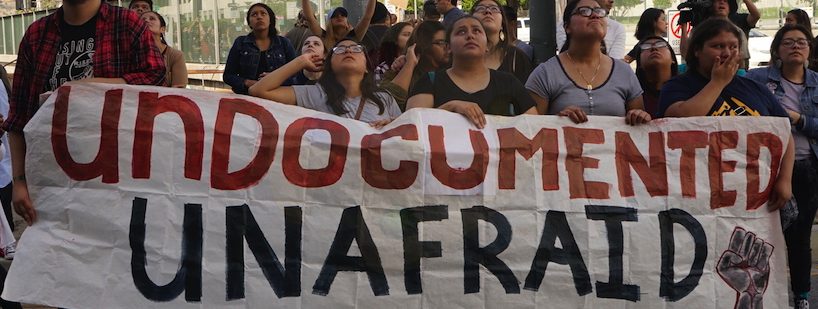Introduction
President Trump’s efforts to end Deferred Action for Childhood Arrivals (DACA) has highlighted how many undocumented immigrants live in constant fear. There is an ever-present chance of being deported to a country they left as small children, or that their parents will be deported. A 2017 article by Corey Mitchell in Education Week, titled “With Rollback of DACA, ‘Dreamers’ in U.S. Schools Prepare for a Fight,” discusses how the Trump administration’s efforts to repeal DACA has impacted students across the country.
The constant struggle of undocumented immigrants in America is not new. For decades, undocumented immigrants have lived in limbo in America, trying to gain education, work, and a better life while facing beaurocratic barriers. Undocumented students have faced challenges in accessing higher education long before DACA. A 2015 National Bureau of Economic Research working paper by Dylan Conger and Lesley Turner, titled “The Impact of Tuition Increases on Undocumented College Students’ Attainment,” looks deeply at the effects of the City University of New York (CUNY) ceasing to charge in-state tuition to undocumented students in 2002.
Before DACA
Some states offer in-state tuition rates for undocumented college students. This was the case at CUNY, until they reversed the policy in 2002. In just a few months, the legislature restored in-state tuition rates for undocumented students, but that brief change caused noticeable negative outcomes. This price shock caused an immediate 8% decrease in enrollment and a 22% decrease in degree recipients of students who enrolled the semester before the price shock (Conger & Turner, 2015). These striking impacts show the influence of offering in-state tuition rates to undocumented students on access to higher education.
DACA
In 2012, President Obama started the DACA program to keep eligible undocumented immigrants from being deported while providing temporary work authorization (Conger & Turner, 2015). Under this program, about 250,000 children were eligible, while millions more are children of undocumented immigrants (Mitchell, 2017). DACA provided temporary security to many American children, prompting Obama to pursue DACA expansion in 2014. Though this effort was suspended, many states with high immigrant populations offered in-state tuition to undocumented students at public universities (Conger & Turner, 2015).
Repeal of DACA
Trump’s repeal of DACA ends a short era of security for young, undocumented Americans. Roberto Gonzales, a scholar of undocumented residents, said that the DACA repeal compounds increasing fear due to the most aggressive immigration enforcement in recent American history. Immediately following the decision, thousands of students in Denver, New York, Chicago, and across the country, walked out of schools and rallied for the rights of undocumented Americans. A junior at a college in North Carolina, Leslie Arreaza, is attending college thanks to the help of a scholarship which offers tuition support for DACA-eligible students from the partnership of private donors and private colleges. Another DACA-eligible student attending college with an independent scholarship in Tennessee says she is constantly thinking, “What is going to happen to me? Am I going to be able to finish my education?” (Mitchell, 2017).
